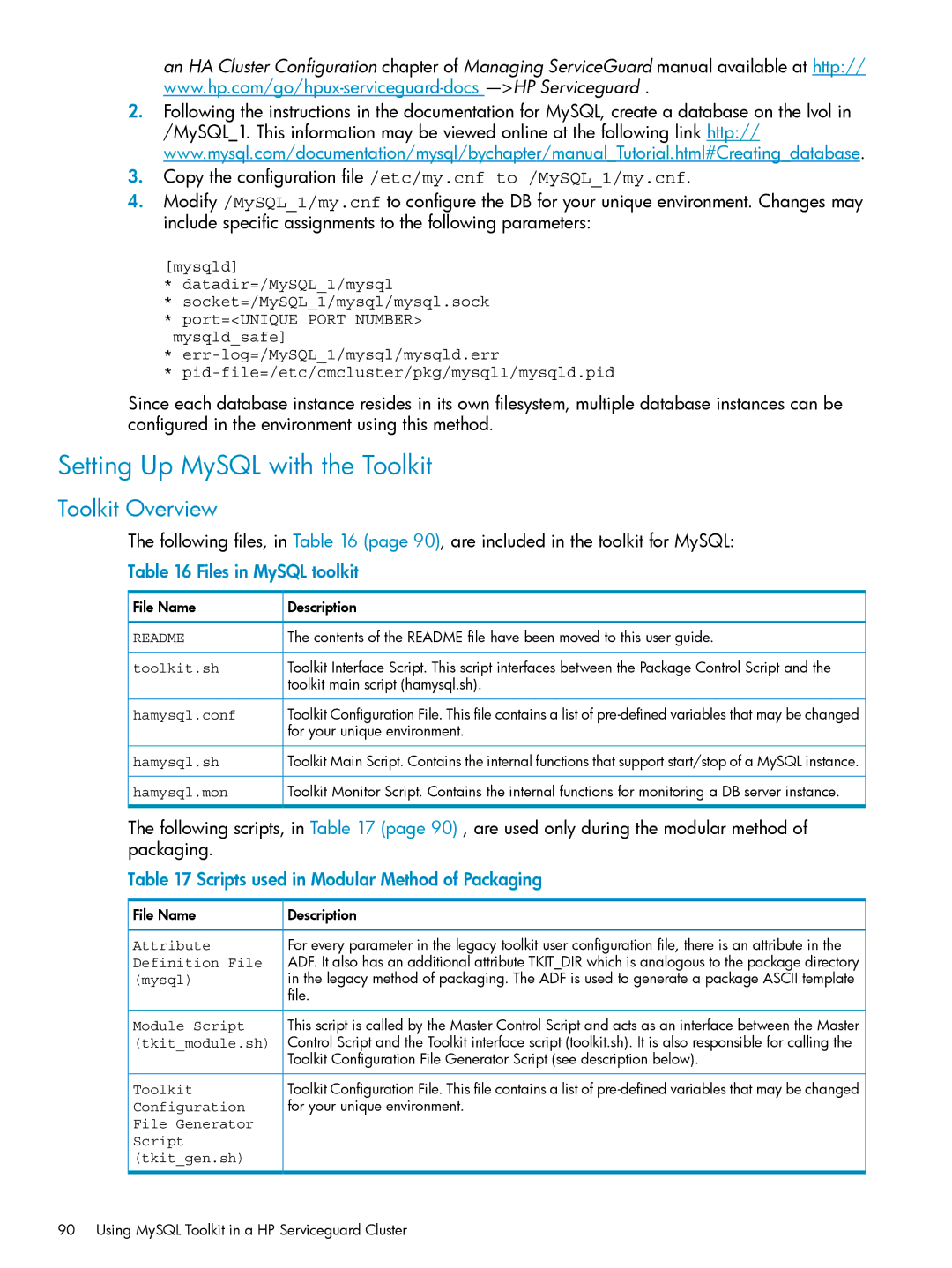
an HA Cluster Configuration chapter of Managing ServiceGuard manual available at http://
2.Following the instructions in the documentation for MySQL, create a database on the lvol in /MySQL_1. This information may be viewed online at the following link http:// www.mysql.com/documentation/mysql/bychapter/manual_Tutorial.html#Creating_database.
3.Copy the configuration file /etc/my.cnf to /MySQL_1/my.cnf.
4.Modify /MySQL_1/my.cnf to configure the DB for your unique environment. Changes may include specific assignments to the following parameters:
[mysqld]
*datadir=/MySQL_1/mysql
*socket=/MySQL_1/mysql/mysql.sock
*port=<UNIQUE PORT NUMBER>
mysqld_safe]
*
*
Since each database instance resides in its own filesystem, multiple database instances can be configured in the environment using this method.
Setting Up MySQL with the Toolkit
Toolkit Overview
The following files, in Table 16 (page 90), are included in the toolkit for MySQL:
Table 16 Files in MySQL toolkit
File Name | Description |
README | The contents of the README file have been moved to this user guide. |
toolkit.sh | Toolkit Interface Script. This script interfaces between the Package Control Script and the |
| toolkit main script (hamysql.sh). |
hamysql.conf | Toolkit Configuration File. This file contains a list of |
| for your unique environment. |
hamysql.sh | Toolkit Main Script. Contains the internal functions that support start/stop of a MySQL instance. |
hamysql.mon | Toolkit Monitor Script. Contains the internal functions for monitoring a DB server instance. |
The following scripts, in Table 17 (page 90) , are used only during the modular method of packaging.
Table 17 Scripts used in Modular Method of Packaging
File Name | Description |
Attribute | For every parameter in the legacy toolkit user configuration file, there is an attribute in the |
Definition File | ADF. It also has an additional attribute TKIT_DIR which is analogous to the package directory |
(mysql) | in the legacy method of packaging. The ADF is used to generate a package ASCII template |
| file. |
Module Script | This script is called by the Master Control Script and acts as an interface between the Master |
(tkit_module.sh) | Control Script and the Toolkit interface script (toolkit.sh). It is also responsible for calling the |
| Toolkit Configuration File Generator Script (see description below). |
Toolkit | Toolkit Configuration File. This file contains a list of |
Configuration | for your unique environment. |
File Generator |
|
Script |
|
(tkit_gen.sh) |
|
